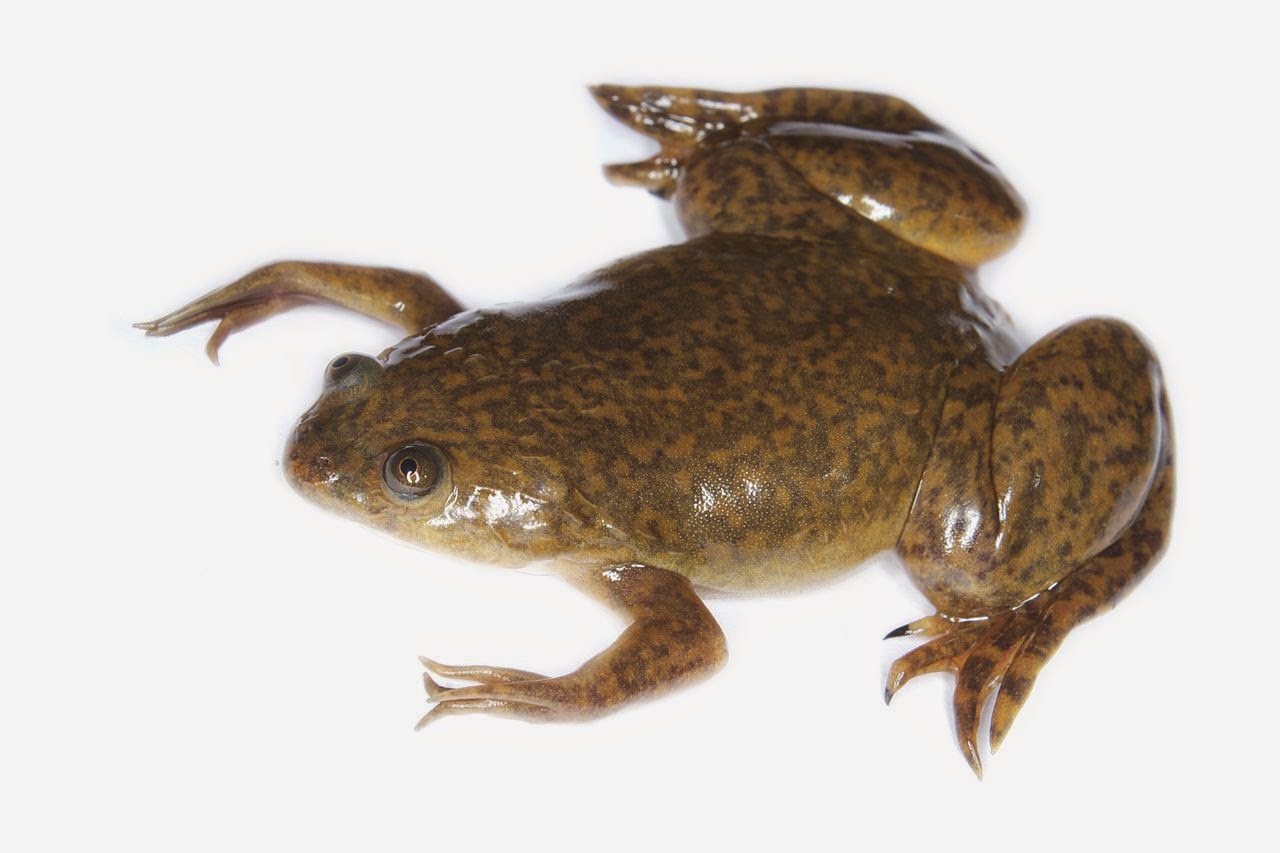African Clawed Frog
African Clawed Frog
Image source: http://commons.wikimedia.org/wiki/User:Poleta33
Latin name: Xenopus laevis1. Xenopus laevis, the African Clawed Frog, is the largest and most widely distributed of its genus. They are originally from Africa south of the Sahara. They have character traits in common with frogs and toads, and are commonly referred to either way. The natural habitat in Africa for these frogs is murky ponds. Xenopus laevis have been known to migrate overland from one pond to another during Africa's rainy season.
2. This frog is wedge shaped, with the head being smaller than the rest of the body. The eyes are positioned on the top of the head and lack eyelids.
3. The African Clawed Frog is stout bodied and big footed like other members of the family Pipidae.
4. The common name comes from the presence of small, black curved claws on the inner three toes of the hind feet.
5. Captive Xenopus laevis can become quite tame and may swim to the surface of the tank and take food from a person's fingers.
6. Frogs will stand on their hind legs, protrude their heads from the water and may even chirp, particularly in the evenings. Ideally the water depth should allow this "serenade" behavior.
7. X. laevis is a rather inactive creature. It is incredibly hardy and can live up to 15 years.
8. At times the ponds that X. laevis is found in dry up, compelling it, in the dry season, to burrow into the mud, leaving a tunnel for air. It may lie dormant for up to a year. If the pond dries up in the rainy season, X. laevis may migrate long distances to another pond, maintaining hydration by the rains.
9. Xenopus laevis is an adept swimmer, swimming in all directions with ease.
10. Xenopus laevis is barely able to hop, but it is able to crawl.
11. Xenopus laevis spends most of its time underwater and comes to surface to breathe. Respiration is predominantly through its well developed lungs; there is little cutaneous (through skin)respiration.
12. African Clawed frogs are specifically adapted for stagnant water conditions.
13. Xenopus mature in about 14 weeks and become sexually mature at a body length greater than 7.5 cm.
14. Heart rate is 8 beats/minute at 20 C and is 40-60 beats/minute at 250 C. (Amphibian physiology is temperature dependent.)
15. Skin is damp and slippery due to a mucous layer which serves as a protective covering for sensitive, permeable skin and contains chromatospores.
16. Teeth are present in the upper jaw for gripping food.
17. The heart is 3 chambered with no diaphragm present.
18. Large fat bodies are attached to each kidney to provide energy during hibernation and reproduction.
19. Xenopus readily regenerate lost limbs.
20. Blood collection is via the clipping of toe web or cardiac puncture.
21. The tongue of the Xenopus is important for securing prey. The tongue is muscular, flexible and projectable and completely attached to the floor of the mouth.
22. Xenopus laevis are pale to dark grey or green dorsally with an off white underside.
23. Their average size is 8-15 cm.
24. The hindlimbs are large and well adapted to a totally aquatic environment. The much smaller forelegs are used to push food into the mouth.
25. Normal behavior is for these frogs to spend most of their time lying motionless below the surface of the water.
26. Metal ions are toxic to Xenopi, lowering their resistance to infection.


Comments
Post a Comment